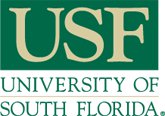Below is a summary of the abstract you submitted. Presenting author(s) is shown in bold.
If any changes need to be made, you can modify the abstract or change the authors.
You can also download a .docx version of this abstract.
If there are any problems, please email Dan at dar78@pitt.edu and he'll take care of them!
This abstract was last modified on March 16, 2021 at 1:36 p.m..

Background: Bacteriophages are a potential alternative to antibiotics that can help mitigate antibiotic resistance. These viruses infect bacteria and can either lyse them or incorporate their genomes. Bacteriophage Girr is a cluster F phage belonging to the subcluster F1. It is classified as a temperate phage and primarily infects Mycobacterium smegmatis. 60% of its genome has no known function. This is slightly lower than the average bacteriophage genome which has 70% of genes with unknown function. Gene 78 is one of these genes with no known function and poor HHPred matches. It has 241 base pairs, and it is similar to genes across several other phage clusters including A1, F2, and O. The purpose of this work is to determine if this gene product is cytotoxic and/or protective against phage infection. Methods: To analyze the desired gene, primers were made using the Girr genome and gene 78 was isolated using polymerase chain reaction. The PCR product was confirmed via gel electrophoresis and purified using column purification. Then, the gene was assembled into the pExTra plasmid. This plasmid is a six thousand base pair inducible and selective plasmid using tetracycline and kanamycin, respectively. It also has both an Escherichia coli and M. smegmatis origins of replication as well as an mCherry reporter. E. coli transformation was performed to allow the rapid and stable propagation of the plasmid. Finally, the recombinant plasmid was introduced into M. smegmatis using electroporation. Once the plasmid containing gene 78 was in the host bacterium, an immunity assay and a cytotoxicity assay were performed to test for protective or inhibitory effects of the gene. Results/Conclusions: The results of the cytotoxicity assay demonstrated that gene product 78 was not cytotoxic and had no inhibitory effects on bacterial growth. Expression was able to be confirmed as the colonies did turn pink due to expression of mCherry. The results of the immunity assay showed that gene 57 also had no protective effects against phage infection as plaque formation was clearly observed. However, this gene may potentially be cytotoxic and/or protective. Because the gene product was never sequenced, it is possible that it mutated during manipulation and was consequently inactivated. It is also possible that the gene product was not able to be expressed in high enough concentrations to produce any notable effect. Additionally, gene product 78 could be inherently unstable or prone to degradation when expressed alone or require other protein-protein interactions to be functional. These unknown factors confound the results of the assays and prompt further investigation of this gene product. Primarily, sequencing the gene product before conducting more experiments would allow for a more thorough analysis. We thank Danielle Heller, Vic Sivanathan, and the SEA GENES team for support of this project.

